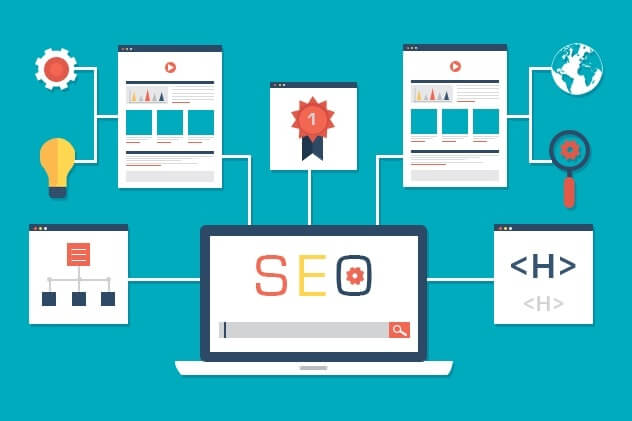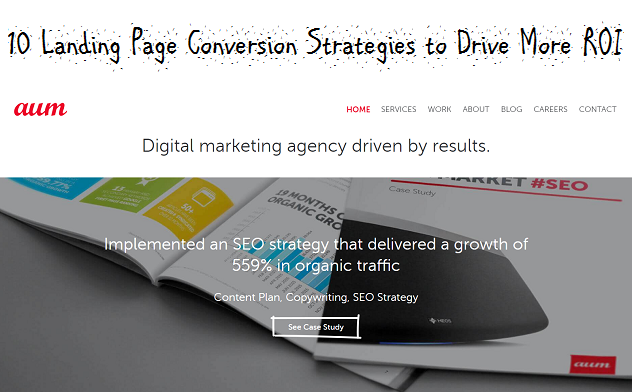The Importance of SEO in Web Development
SEO is important, no doubt about it, but as it is, it doesn’t get the attention it deserves before a website goes live. It’s unfortunate, but (thankfully) we’re here to change that.
Think about it this way, if you’re designing a house in Florida to withstand hurricane-force winds, will you place a random foundation on which everything else will be built, or will you design something made specifically for strong wind? Exactly, your objective is for the house to withstand a hurricane, so you take that into account instead of relying on shutters and doors to keep you safe.

Moving to websites, you simply can’t rely on content for high rankings; you have to develop the site with SEO guidelines in mind. To help you out with that, here are 5 SEO tips to follow before launching your new website!
1: It’s All about Structure
If we’re talking about website structure, we’re also talking about site crawlability, or how easy it is for a search engine’s bots to crawl a site and determine what it’s all about. This means everything from internal links duplicate content.
On the subject of internal links, users (and bots) should be able to navigate from page to page with ease, and should be able to reach any given page in as few clicks as possible. In other words, there should be a clear pathway between links.
Onto duplicate content, a canonicalization issue, this is when two or more duplicate versions of a page appear on different URLs. As for why this is bad, search engines have a hard time deciding which page to include in their indices, which then leads to lower visibility for each page, lowering the site’s rankings. To overcome duplicate content issues, mosey on over to Google’s Search Console for help!
2: Do You Need Normalization? Yes, Yes You Do
Leading off of structure and in simple terms, URL normalization is when you modify and standardize URLs to place more importance on certain pages and to reduce canonicalization issues. When dealing with SEO, crawlers do it to avoid crawling the same page twice, so make sure to employ it when deciding on URLs. On a similar vein, don’t forget to normalize when migrating your site from HTTP to HTTPS!
3: The Need for Speed, Site Speed
Let’s start by acknowledging that site speed is of utmost importance to Google, especially now that mobile SEO comes into play with their mobile-first index, in which a one-second delay makes the difference between a high or low bounce-rate.
That being said, there are a couple of things you can do to speed up your site:
- Leverage browser caching
- Optimize image sizes
- Enable compression
- Eliminate render-blocking JavaScript and CSS in above-the-fold content
- Minify JavaScript, CSS and HTML
- Reduce server response time
- Avoid landing page redirects
- Prioritize visible content
Your first step should be addressing all these issues before launching, but if that’s already happened, use Google’s PageSpeed Insights tool for a detailed report on what you can do to fix whatever issues already exist on your site.
4: Are You Mobile Friendly?
Arguably the most important tip here, optimize your site for mobile users! We already covered that Google is placing the focus on mobile SEO with their new indexing, so don’t you dare launch your site if it’s not mobile-friendly. On the subject, please don’t stop at being mobile-friendly. This is the bare minimum to pass Google’s tests and will not help you with actual users. Instead, go for a responsive design that resizes content to fit any and all screen sizes.
We talked about speed earlier, but it’s important to mention it in this section as well because speed is something that mobile uses expect from all web pages. As such, try and make whatever pages you can AMP (accelerated mobile pages) with Google’s AMP guidelines.
Once you’ve optimized your site for mobile, make use of Google’s mobile friendly test and go over this article with 5 mobile SEO tools to help you out!
5: You Can’t Forget About On-Page SEO Factors
Aptly named, on-page SEO factors refer to elements of any given web page that affect its ranking on search engines. Content is technically included as an on-page factor by virtue of being on the page, but for our discussion we’ll veer away from content (except for keywords) and focus on tags and descriptions.
Tags
Starting with the title tag, this is extremely important for SEO because it literally describes the page’s content. As such, make sure to include your keyword (phrase) near the beginning of the title tags, and keep them short and descriptive. A brief aside, make sure to wrap your title in an H1 tag and subheadings in H2 tags.
Descriptions
When it comes to descriptions, keywords should also be used (not too much, there’s not enough space anyway), but place more focus on synonyms and phrases that will grab a user’s attention, as they’re the ones who’ll be reading the description.
Tip Roundup
The reality of the Internet is that a web page is different for you and me than it is for a search engine’s crawlers. Because of this, you can’t rely on what can be seen on a screen for high rankings. Instead, you have to delve deeper into the nitty gritty of what makes a website a website. In other words, you also have to take web development into account.
On that end, here’s a roundup of the tips we covered today:
- It’s all about structure
- Do you need normalization? Yes, yes you do
- The need for speed, site speed
- Are you mobile friendly?
- You can’t forget about on-page SEO factors
For implementation, if you’re familiar and comfortable with web development, then go for it! If not, you can always look for a marketing agency with SEO services to help you out. Whatever you choose, best of luck!





